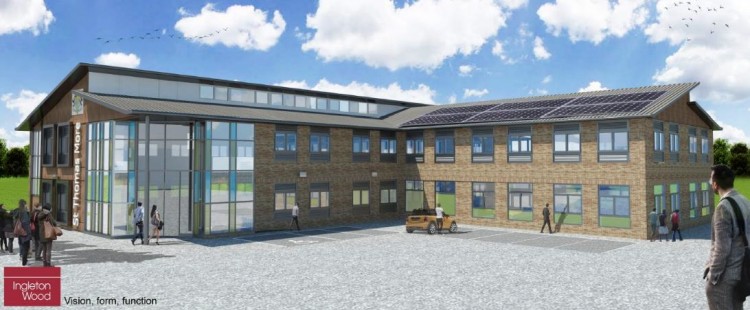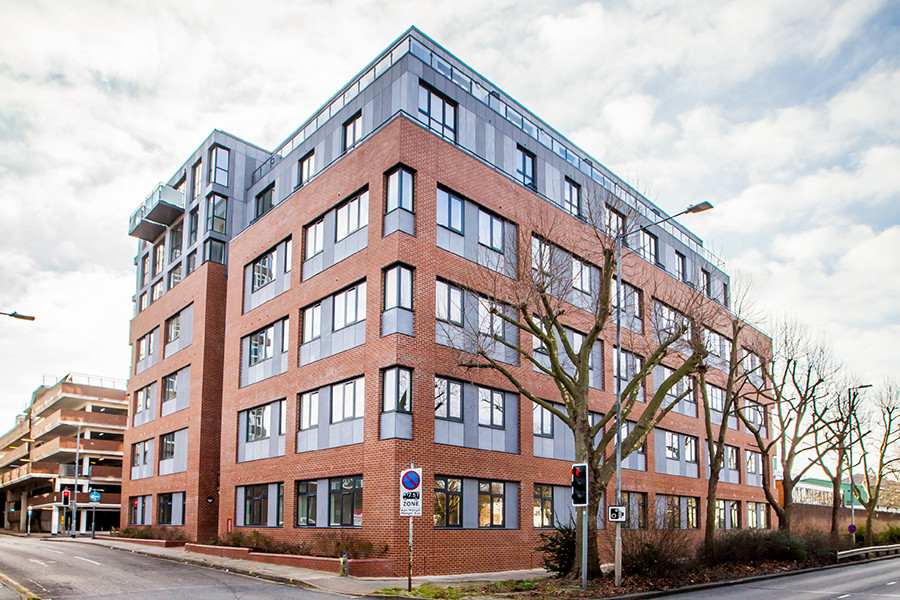8 years ago
5 Risks of Healthcare Construction Projects

As places that take every precaution to ensure the health and wellbeing of patients is never compromised, it may seem ironic to describe a hospital as a high-risk environment. But when it comes to undertaking a construction project in such a space, that’s exactly what they become.
Healthcare construction projects present a number of unique risks and dangers that have to be prepared for thoroughly. Without a prior understanding of the risks, these challenging builds can prove hazardous to the safety of staff, patients and construction workers alike. Here are five of the main aspects to consider during a hospital construction project and the steps we at Davis Construction take to manage them.
1. Asbestos
Asbestos is a toxic mineral that was used extensively in builds between the 1950s and 80s. This is a problem that is found during many commercial construction projects, but presents a renewed threat within hospitals due to the vulnerability of the patients within. Hospitals are often updated to keep up with the latest medical advancements and, during these updates, the risk of unearthing asbestos from years gone by is heightened.
To tackle this threat, it is vital that a thorough R&D survey be completed prior to carrying out any work. It should therefore be recommended that the hospital administrators set aside part of their budget to ensure the safe, controlled removal of asbestos where necessary before work takes place.
2. Access Issues
Naturally, hospitals are extremely busy places and emergency situations can happen at any time, meaning that corridors need to remain clear when construction work is taking place.
Where possible, specific site routes should be organised in preparation of the project; this is the best way to ensure that construction workers are separate from the day-to-day operations of the hospital. If you find that using a regular entrance might impede upon the running of the hospital, it is often beneficial to enquire about the use of a fire escape as a designated entrance for the construction team. This should, of course, be kept clear at all other times in case of fire.
Another element to consider is the transportation of heavy machinery to specific floors where it is needed. Regular access to a lift should be requested where necessary to aid efficiency and prevent obstructing stairwells.
3. Well-being of Patients
As places of rest and recuperation, hospitals have a priority to ensure the comfort of their patients is not compromised at any stage of the construction process. Their well-being should be considered at every step. For example, it is important to try to avoid undertaking noisy work at times that could be particularly distressing to patients. The best way to do this is by liaising with staff and, if the work has to be undertaken in a densely populated area, enquire about moving patients temporarily to a quieter location.
As one of the foremost healthcare construction companies in Essex, the message of remaining conscientious of the safety and well-being of patients during hospital builds is one that is deeply instilled in the entire Davis Construction workforce, as it should be for any company working on a healthcare project.
4.Protecting Hospital Equipment
Hospitals are unique environments that often have millions of pounds’ worth of equipment to be installed or already on site. It is paramount that this equipment is not damaged throughout the duration of the project. Harming hospital property will not only lead to the construction company being liable to pay for replacements or repair, it could also leave vital hospital equipment out of use and therefore compromise patient well-being.
In previous hospital projects that Davis Construction has worked on, we have successfully completed the delivery and installation of specialist equipment, including The Holly Private Hospital’s MRI Suite. During this project, steps were taken to clear the area around the new equipment efficiently and effectively to ensure its safety.
5. Dust & Infection Control
Finally, but perhaps most importantly, it is critical to minimise the risk of the spread of infection during the construction project. Fungus such as aspergillus can be transmitted through dust and air, and consequently present a risk to already vulnerable patients.
At Davis Construction, we routinely arrange for specialist tools such as air filters and portable containment to be prepared before engaging in significant building work. Moreover, simple but effective practices should be upheld during each stage of the building. This includes regular vacuuming and mopping construction areas, and the use of jetwashes where necessary. It is also crucial to be forward-thinking when thinking about the design of fixtures and fittings of the room to prevent dust build up. We discourage the use of flat surfaces to prevent dust settling and make general cleaning and maintenance easier.
As specialists in healthcare construction, minimising risk at every stage of the process is a key focus of our work. Our dedicated builders in Southend offer professional and innovative construction solutions for your project. Call us on 01702 601000 or email info@davisconstruction.co.uk to discuss your project with one of our experts.

